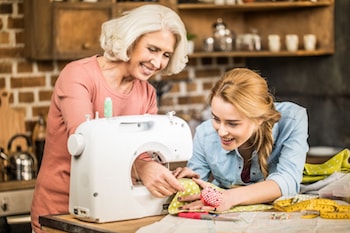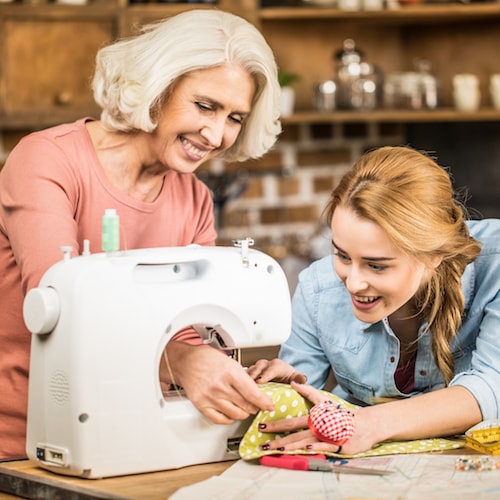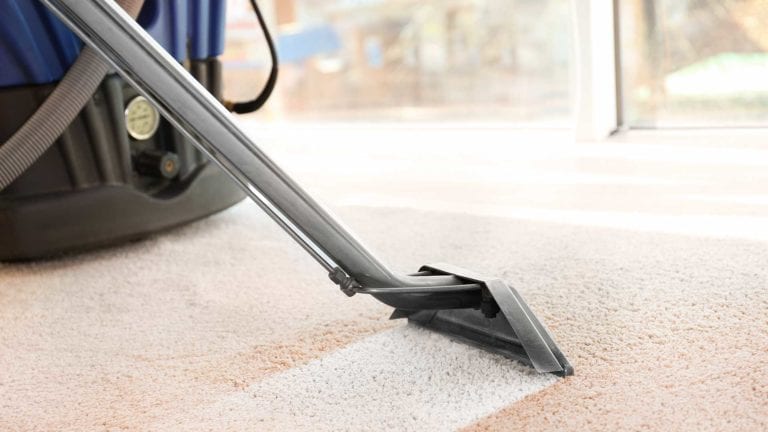How to Choose a Sewing Machine
 Today’s sewing machines are not “grandmother’s” huge devices with a mechanical drive. Today’s sewers increasingly prefer new devices with a variety of functions.
Today’s sewing machines are not “grandmother’s” huge devices with a mechanical drive. Today’s sewers increasingly prefer new devices with a variety of functions.
What are the types of modern sewing machines? And how to choose a sewing machine that will suit your needs?
How to choose a sewing machine and not make a mistake
When choosing a sewing machine, look at the following parameters:
- Control type
- Type of shuttle
- Performed stitches
- Paws
- Type of looping
- Sewing speed
- Engine power
Control type
Modern sewing machines are electrically powered and have electromechanical or electronic control. Sewing machines of the first type are the most popular because they are easy to use. For example, a type of the stitch in them is selected using a special wheel on the front panel.
Electronic (computer) control provides more opportunities for sewing. Such devices provide more functions and seams than electromechanical ones. They also often come with a “sewing assistant”, which prompts which settings to choose for a specific task.
Shuttle type
Sewing machines also differ in the type of shuttle. Shuttles can be vertical swinging, vertical rotational and horizontal.
A vertical pendulum shuttle was developed first. It swings left and right at sewing. This type of shuttle is common in inexpensive models. A vertical swinging shuttle must be regularly lubricated.
The vertical rotary shuttle is most often used in expensive sewing machines. As the name implies, it is located vertically, but rotates along the horizontal axis instead of swinging. This type of shuttle is often provided on professional equipment, so we recommend considering it if you are looking for devices for an atelier.
A horizontal shuttle is located along the sewing plane. It is considered to be the most modern and works much faster and quieter than vertical ones. There is no need to lubricate the horizontal shuttle, just simply clean it.
Operational or decorative?
Stitches can be simple and decorative. The best option for repair and making of clothing is straight stitching and zigzagging, for processing the clothing edges – an overlock imitation.
The number of stitch types in electromechanical sewing machines can be from 6 to 40, in computerized machines – a couple of hundred. Coverstitch machines can offer as much as 500 types of stitches. Practice shows that not all types of stitches are used at sewing. Therefore, even if decorative stitches look nice, think if you really need them before buying a sewing machine.
Looking at the paws
Different sewing operations require the corresponding paws. Before making a purchase, look if a sewing machine has them – universal, loop ones, for sewing zippers and for a secret stitch. Some manufacturers may add extra paws for special tasks: ruffling, adding braids, ribbons or beads, quilting, paws for fringe or patchwork. In any case, you can always purchase the required paws additionally.
Types of looping
Processing loops in modern sewing machines can be semi-automatic and automatic. Of course, automatic processing is more convenient, because it allows quickly make a series of neat loops without switching. But this option is presented in expensive models.
Sewing machines from the middle price segment have a function of semi-automatic processing. In this case, looping is performed in four operations: fastening from the top – processing one side – fastening from the bottom – processing the second side.
So, if you sew clothes with buttons not very often, consider sewing machines with the semi-automatic mode.
Sewing speed
The sewing speed of a sewing machine is adjusted by the pressing the pedal. Adjustment can be either stepped or smooth, with the function of protection against jerking. There are also sewing machines without pedals. In such devices, switching on and stopping is performed by pressing the start/stop button.
Engine power
Engine power of sewing machines is not the most important parameter. But we should note that most models have an engine power of 50 to 110 watts. The engine power determines the force of piercing a fabric with a needle and the thickness of the fabric that you can work with accordingly. A sewing machine can also include sets of needles, paws and bobbins, rippers, coil holders, hard protective covers and much more for its successful operation and service.
Embroidery machines
Embroidery machines with computer control stand alone in the family of sewing machines. These devices are designed for professional use and can perform more than 500 types of operations. They can satin-stitch and cross-stitch, do Richelieu embroidery and festoons, reproduce embroidery according to a given project and download schemes from the Internet. There are only buttons for quick access on the case, all information regarding the device operation, including manuals, is displayed on the touchscreen.
Any specialist in the sewing business will say that an overlock is an essential addition to the purchase of a sewing machine and they will be right. Usual sewing machines do the shuttle type of the stitch, while overlocks use chain stitch, so the edge of the fabric is cut off and processed better. Modern overlocks can do from four to seventeen types of stitches, have a differential supply of the fabric, making it easier to work with elastic and light materials.
A coverstitch machine is usually required for professional seamstresses working with knitwear. It creates an elastic flat seam for high quality processing the edges of the product.
A coverlock is a symbiosis of an overlock and a coverstitch machine combining functions and capabilities of both. A coverlock allows making stitches of high quality, several dozen overlocking seams and has a large working surface.
If you need a sewing machine for an atelier or you are a sewing business professional, consider professional models. This is exactly what sewing machines with computer control are.
But if you are looking for a sewing machine for personal household needs, or you just want to learn how to sew, a general-purpose electromechanical sewing machine with standard types of stitches will do.
[su_frame align=”left” class=”relatedposts”]
Read also:
[/su_frame]






